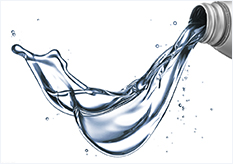Products 产品中心
BioVIS Rheology Modifier
BioVIS Rheology Modifier
Product Description
BioVIS rheological modifier is a kind of polymer composite product obtained by chemical structure modification of natural polymers, which has both environmental protection performance of natural molecules and stability of combined molecules. Through the stretching and winding of its molecular chain, it can well maintain the colloidal stability of drilling fluid in both fresh water and salt water drilling fluids, and play a role in increasing viscosity and cutting. Affected by its thickening effect, it also has a certain effect of reducing filtration loss.
Applications /Functions
• Increases viscosity in drilling & completion fluid
• Thermal stability ≤150℃
Toxicity & Handling
• Bioassay information is available upon request.
• Handle as an industrial chemical, wearing protective equipment and observing the precautions as described in the safety datasheet.
• It is suggested that it should be added last in slurry preparation, especially in brine drilling fluid, and the salt should be fully dissolved before adding this material.
Typical Properties
• Biological Toxicity EC50/(mg/L): ≥30000
• biodegradability BOD5/CODcr/(%): ≥25.0
• Apparent Viscosity: ≥10.0
• Fluid Loss : ≤25.0
Note: 15% brine based mud with addition of 15% POLY-V, aged with 100℃ for 16 hours
Recommended Treatment
• For normal applications, add 0.3-1.0%.
• Add POLY-V in the hopper with control, a sack will be mixed not less than 30 minutes.
• POLY-V will be the last in brine based mud mixing, and to ensure the salt is absolutely dissolved.
Packaging
• BioVIS is packaged in 50-lb or 55-lb (22.7-kg or 25-kg), multi-wall, paper sacks.
• Store in a dry, well-ventilated area. Keep container closed. Keep away from heat, sparks and flame. Store away from incompatibles.
• Follow safe warehousing practices regarding palletizing, banding, shrink-wrapping and/or stacking.

